Some of the world’s most beautiful destinations have now become overrun by waves of tourists. These once-hidden gems now face the challenges of overcrowding, with local cultures and environments declining under the pressure.
From the ancient ruins of Machu Picchu to the idyllic beaches of Santorini, these places are struggling to maintain their appeal amidst the mass of visitors.
Understanding the impact of over-tourism is crucial for preserving what originally made these locations so special.
Venice, Italy
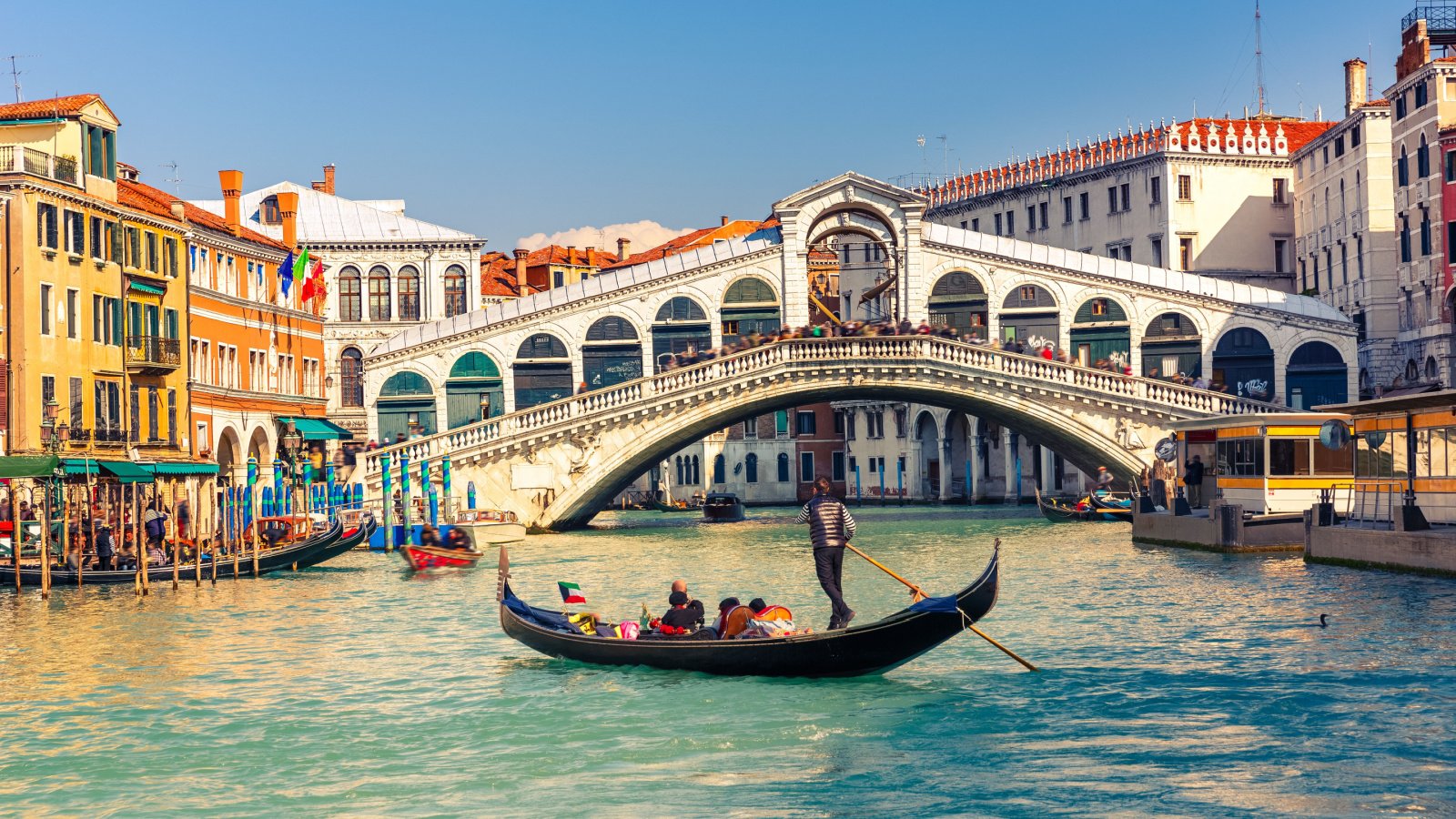
Venice, with its enchanting canals and historic architecture, has long been a dream destination for travelers. However, the city has become a victim of its own popularity, with over 25 million tourists flocking to its narrow streets each year. The overwhelming crowds have led to concerns about the preservation of Venice’s fragile infrastructure and its unique cultural heritage.
Santorini, Greece

Santorini’s stunning sunsets and iconic white-washed buildings have made it one of the most photographed spots in the world.
Unfortunately, this small island now struggles with over-tourism, particularly during the summer months when cruise ships bring thousands of visitors daily. The influx of tourists has strained local resources and made it difficult to experience the island’s true charm.
Machu Picchu, Peru
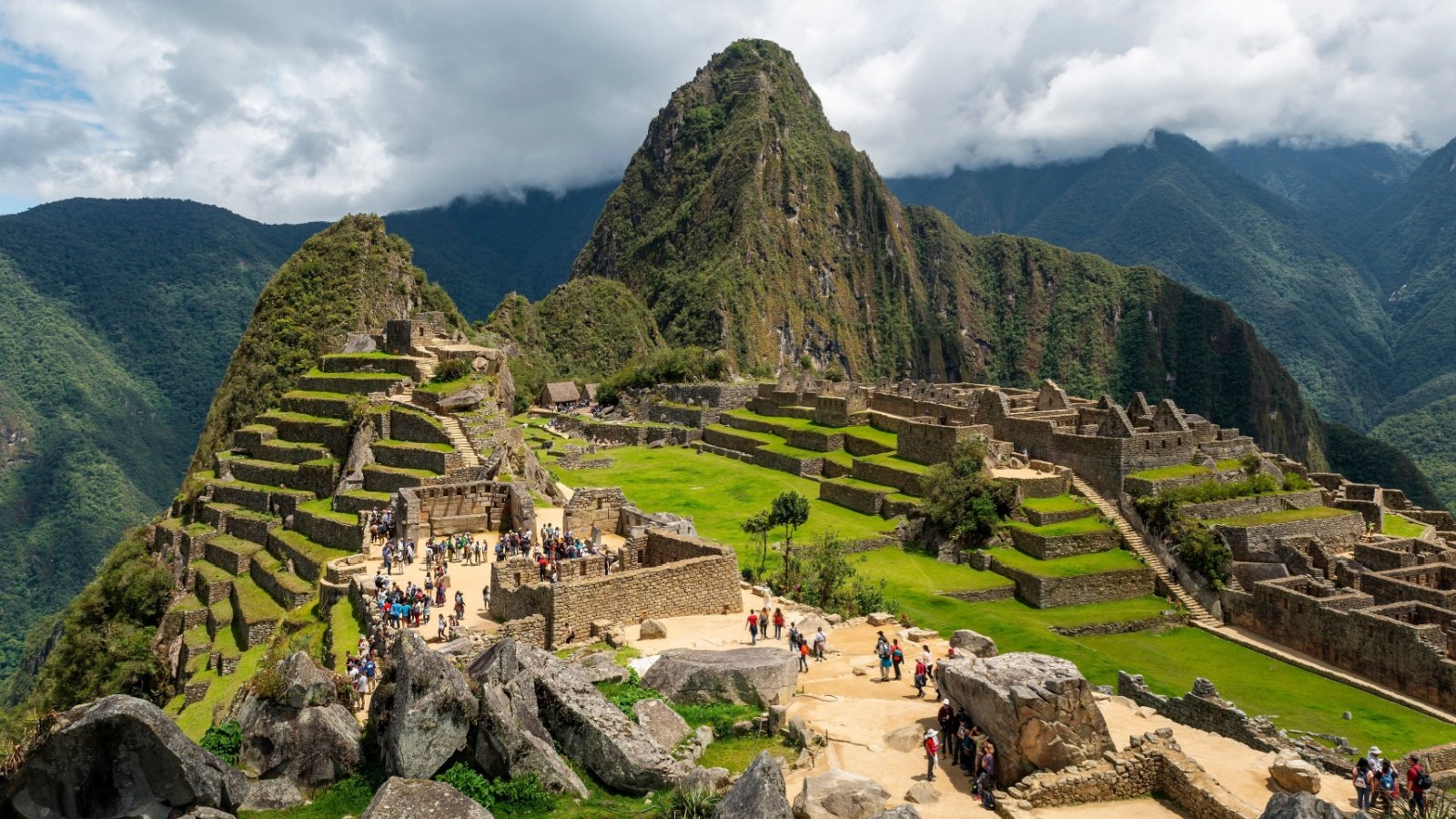
Machu Picchu, the ancient Incan citadel perched high in the Andes, is a bucket-list destination for many. Yet, the number of visitors has soared to over 1.5 million annually, far exceeding the site’s capacity. This surge in tourism has led to concerns about the preservation of the ruins, prompting the Peruvian government to introduce stricter regulations.
Bali, Indonesia
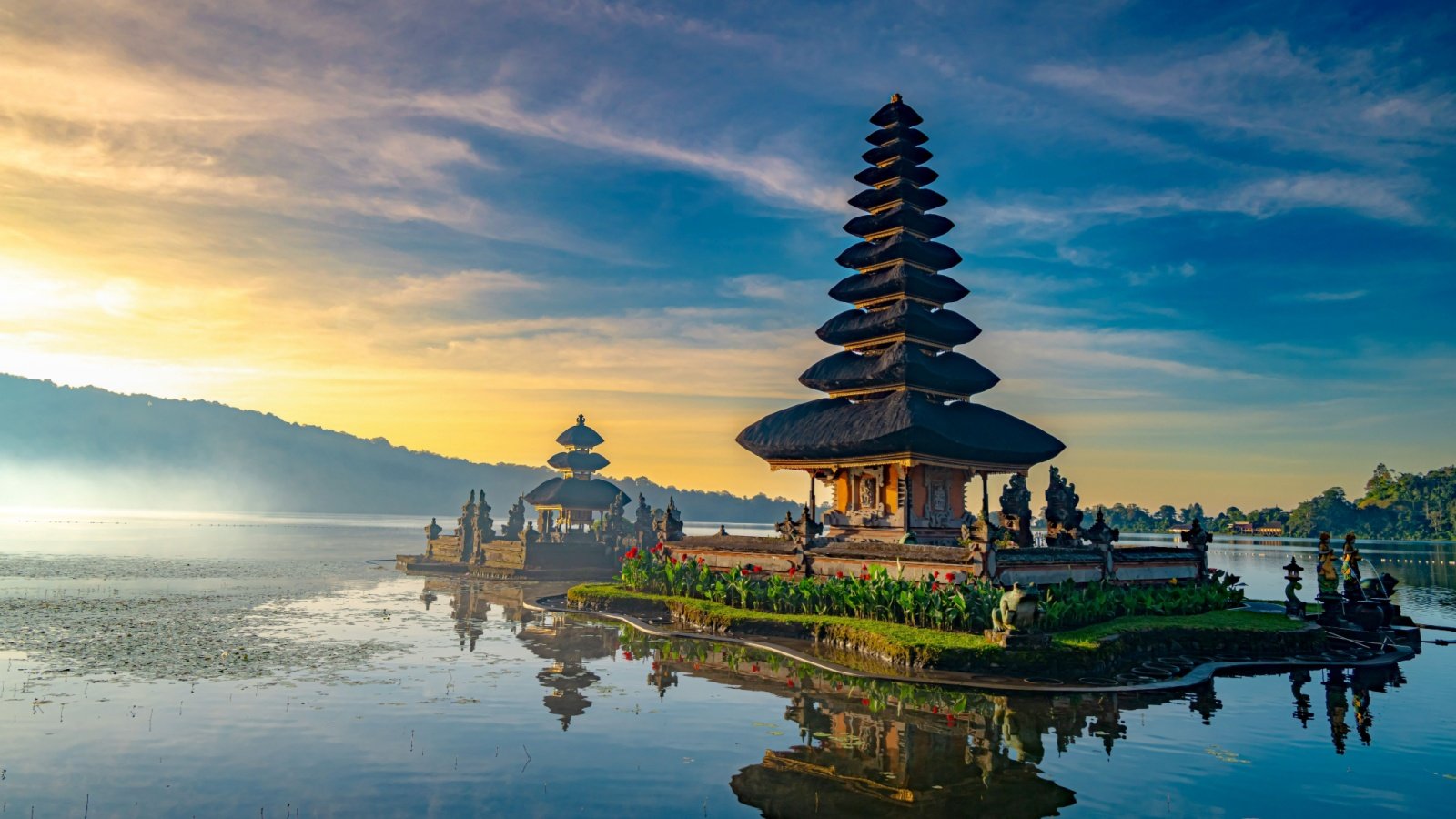
Bali’s tropical beaches, lush rice terraces, and vibrant culture have attracted millions of tourists each year. While the island remains a paradise, its popularity has led to overcrowding in popular areas like Kuta and Seminyak. The influx of visitors has also contributed to environmental issues, including plastic pollution and water shortages.
Dubrovnik, Croatia
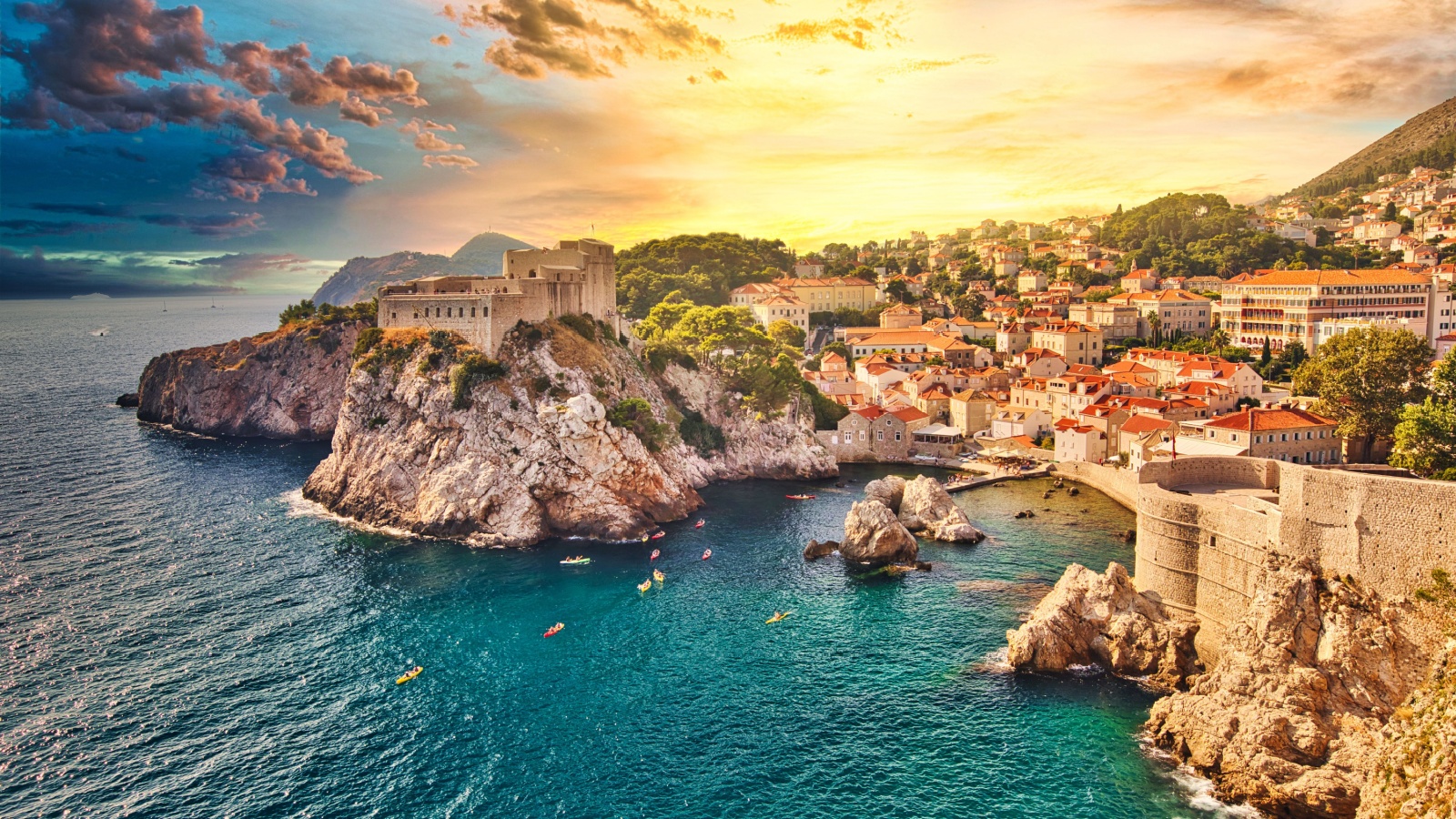
Dubrovnik, often referred to as the “Pearl of the Adriatic,” saw a dramatic rise in tourism after being featured in the television series Game of Thrones.
The city’s medieval walls and picturesque streets are now swamped with tourists, particularly during the summer cruise season. Over-tourism has become such an issue that Dubrovnik has had to limit the number of visitors allowed inside the Old Town.
Reykjavik, Iceland
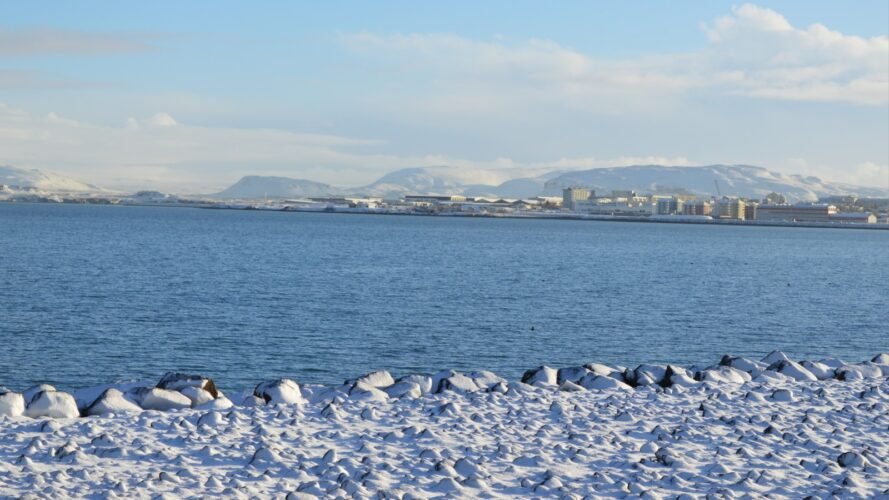
Reykjavik, once a remote and relatively undiscovered capital, has seen a tourism boom in recent years. Iceland’s breathtaking landscapes and unique culture have drawn over 2 million visitors annually, far exceeding the population of the entire country.
The rapid increase in tourism has put a strain on Reykjavik’s infrastructure and led to concerns about the impact on the island’s delicate ecosystems.
Barcelona, Spain
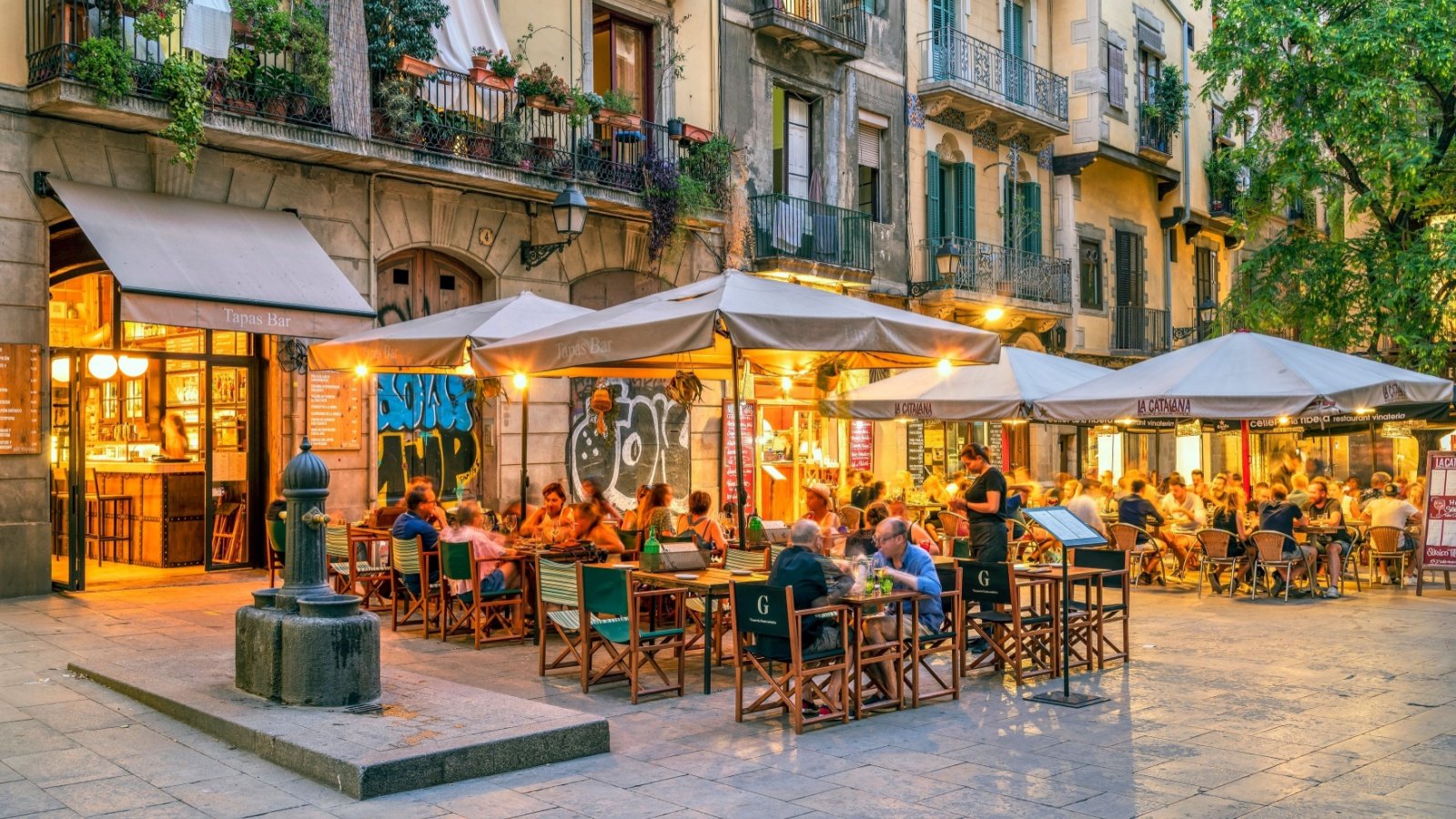
Barcelona’s rich history, stunning architecture, and vibrant culture have made it a top destination for travelers. However, the city’s popularity has led to significant overcrowding, particularly in areas like La Rambla and the Gothic Quarter. The surge in tourism has sparked protests among locals, who feel their city is being overrun by visitors.
Kyoto, Japan
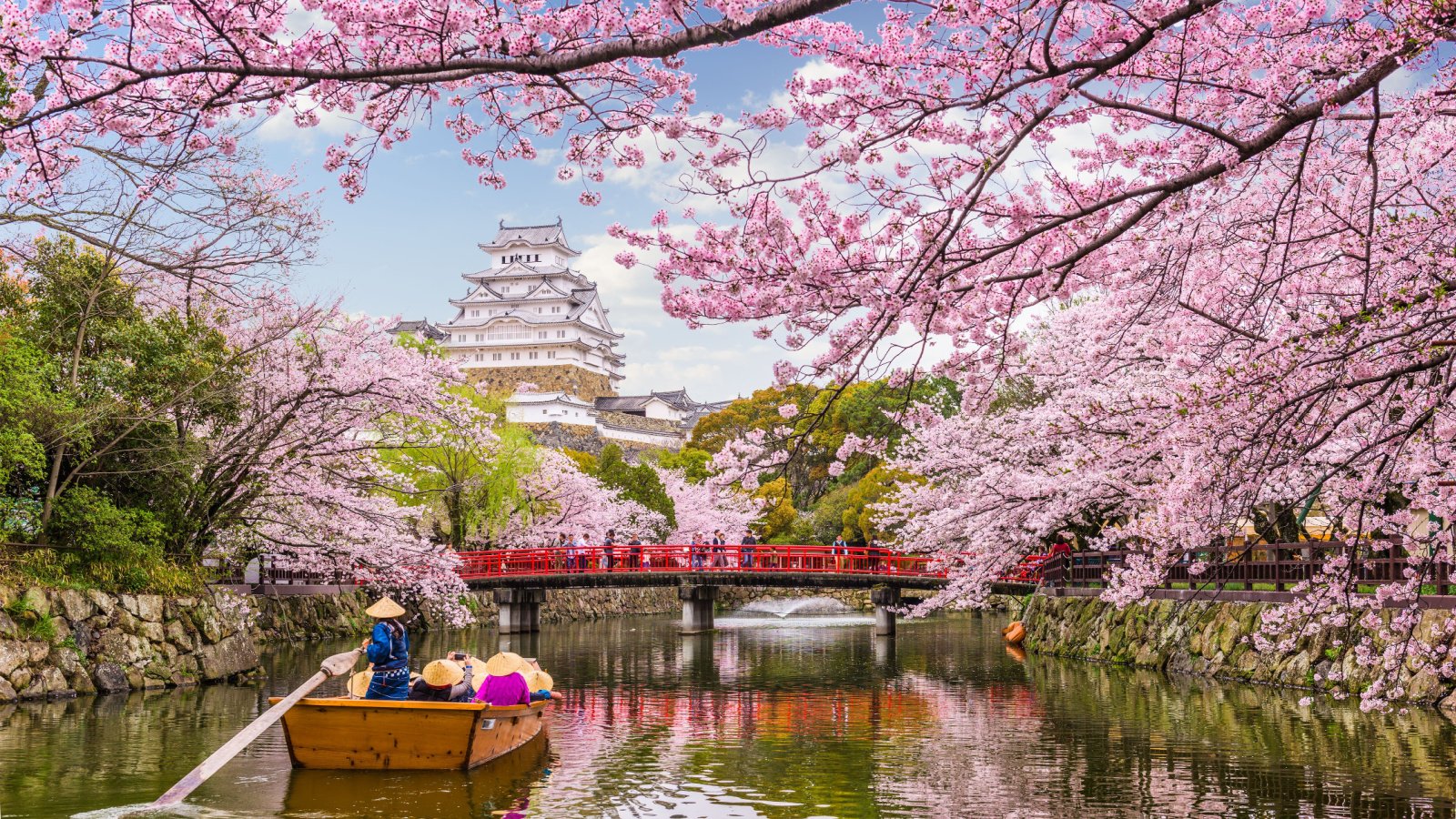
Kyoto, known for its beautiful temples, traditional tea houses, and serene gardens, has experienced a surge in tourism over the past decade. The influx of visitors, especially during cherry blossom season, has led to overcrowding in many of the city’s most iconic sites. This increase in tourism has made it challenging to enjoy Kyoto’s tranquil beauty.
Cinque Terre, Italy
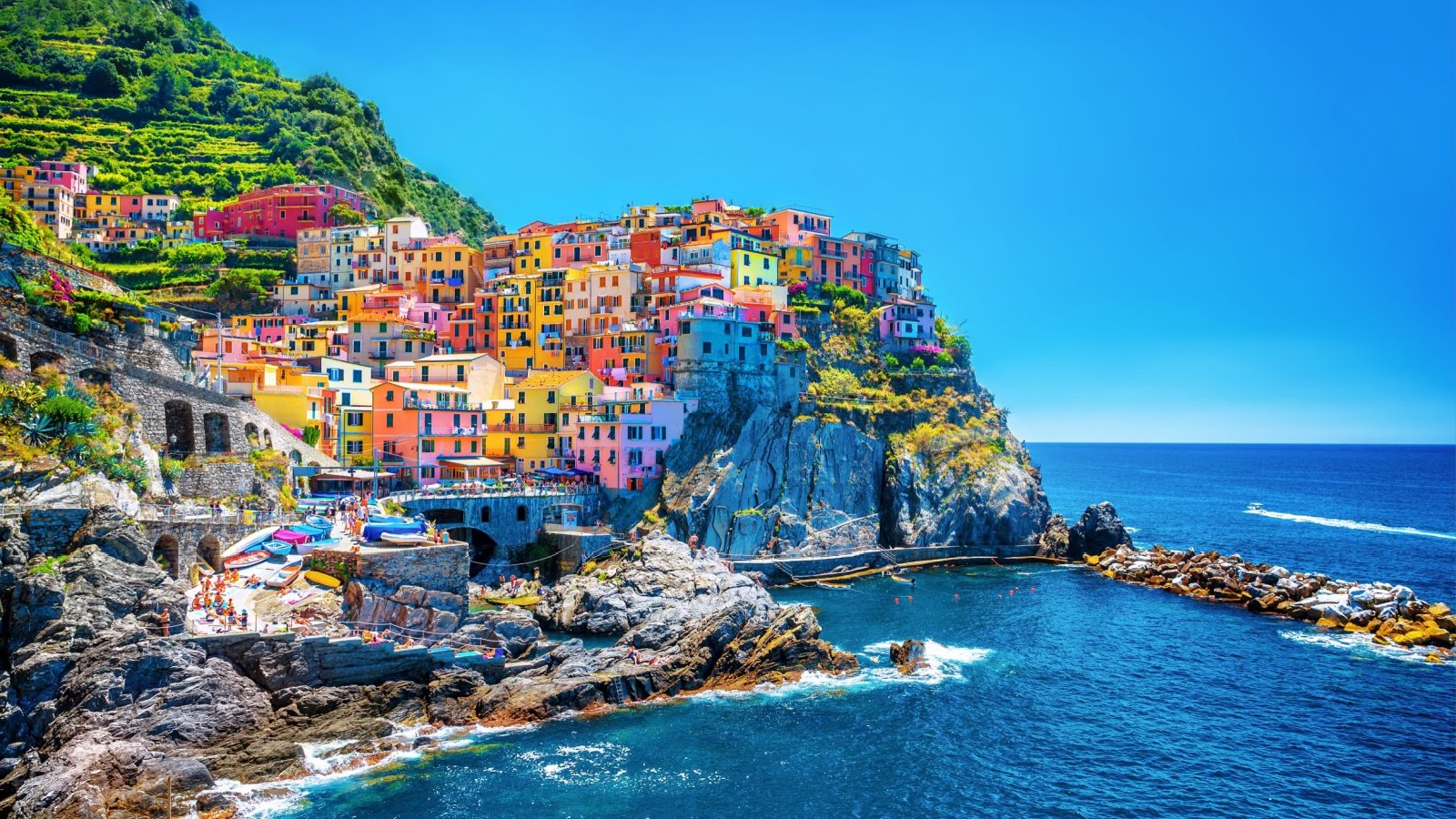
The picturesque villages of Cinque Terre, perched along the rugged Italian coastline, have become a magnet for tourists.
The narrow streets and hiking trails of these charming towns are often packed with visitors, particularly during the summer months. The heavy foot traffic has raised concerns about the preservation of the area’s fragile environment and traditional way of life.
Angkor Wat, Cambodia
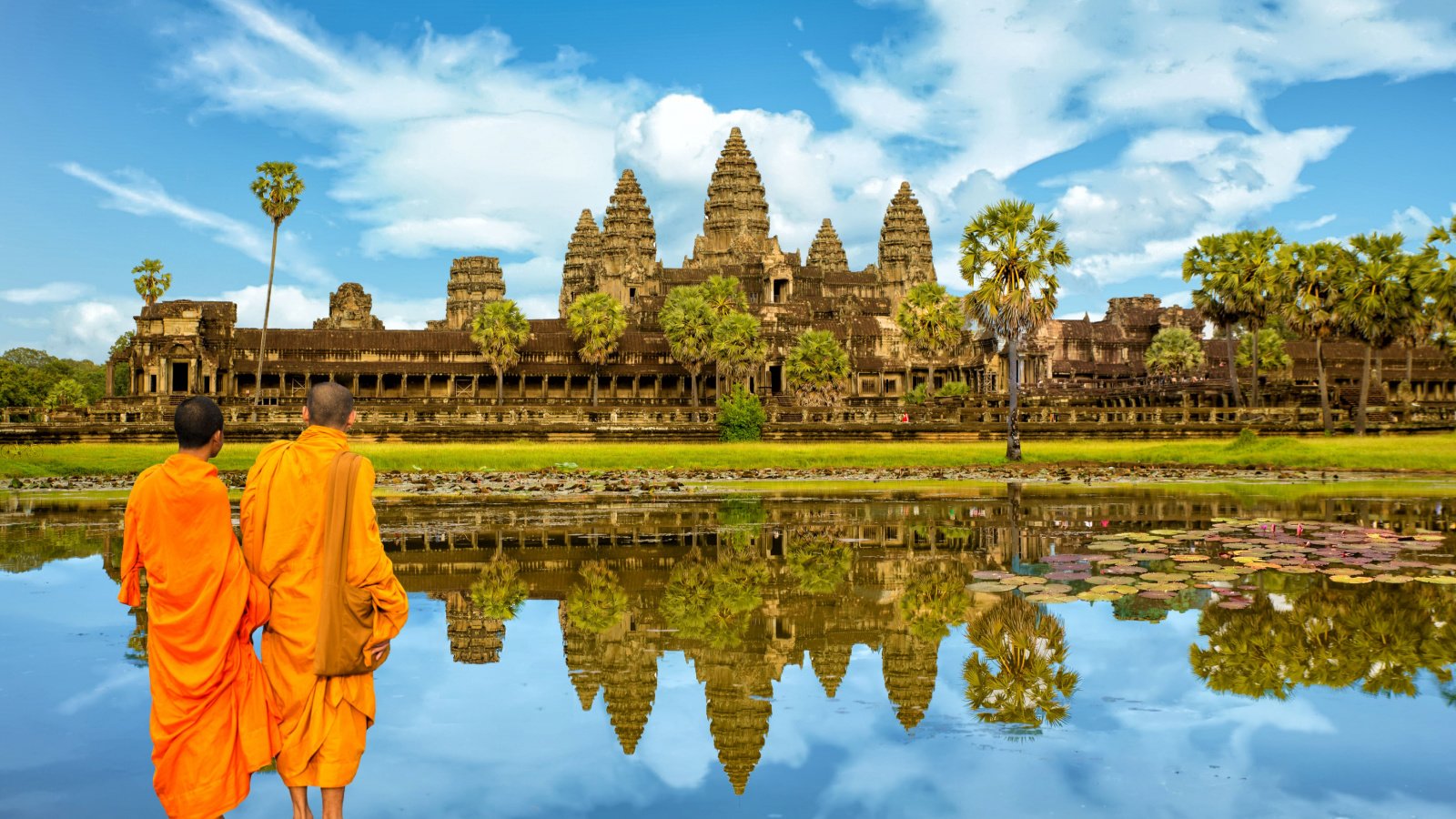
Angkor Wat, the largest religious monument in the world, attracts millions of tourists each year. The site’s popularity has led to significant overcrowding, particularly during sunrise when visitors gather to witness the temple’s silhouette. The heavy tourist traffic has raised concerns about the preservation of the ancient temples and the impact on the surrounding environment.
Amsterdam, Netherlands

Amsterdam’s historic canals, museums, and vibrant nightlife have made it one of Europe’s most popular destinations. However, the city’s compact size means it can quickly become overcrowded, especially during peak tourist seasons. The influx of visitors has led to rising housing costs and frustration among locals, prompting the city to take measures to limit tourism.
Phuket, Thailand
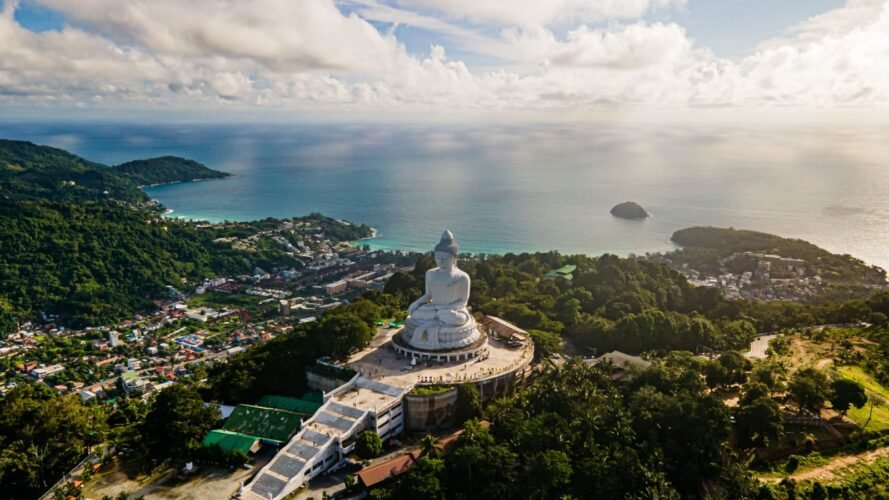
Phuket, known for its stunning beaches and lively nightlife, has long been a favorite destination for travelers. However, the island’s popularity has led to severe overcrowding, particularly at well-known beaches like Patong. The environmental impact of mass tourism has also become a significant concern, with issues like coral reef degradation and plastic pollution on the rise.
Banff National Park, Canada
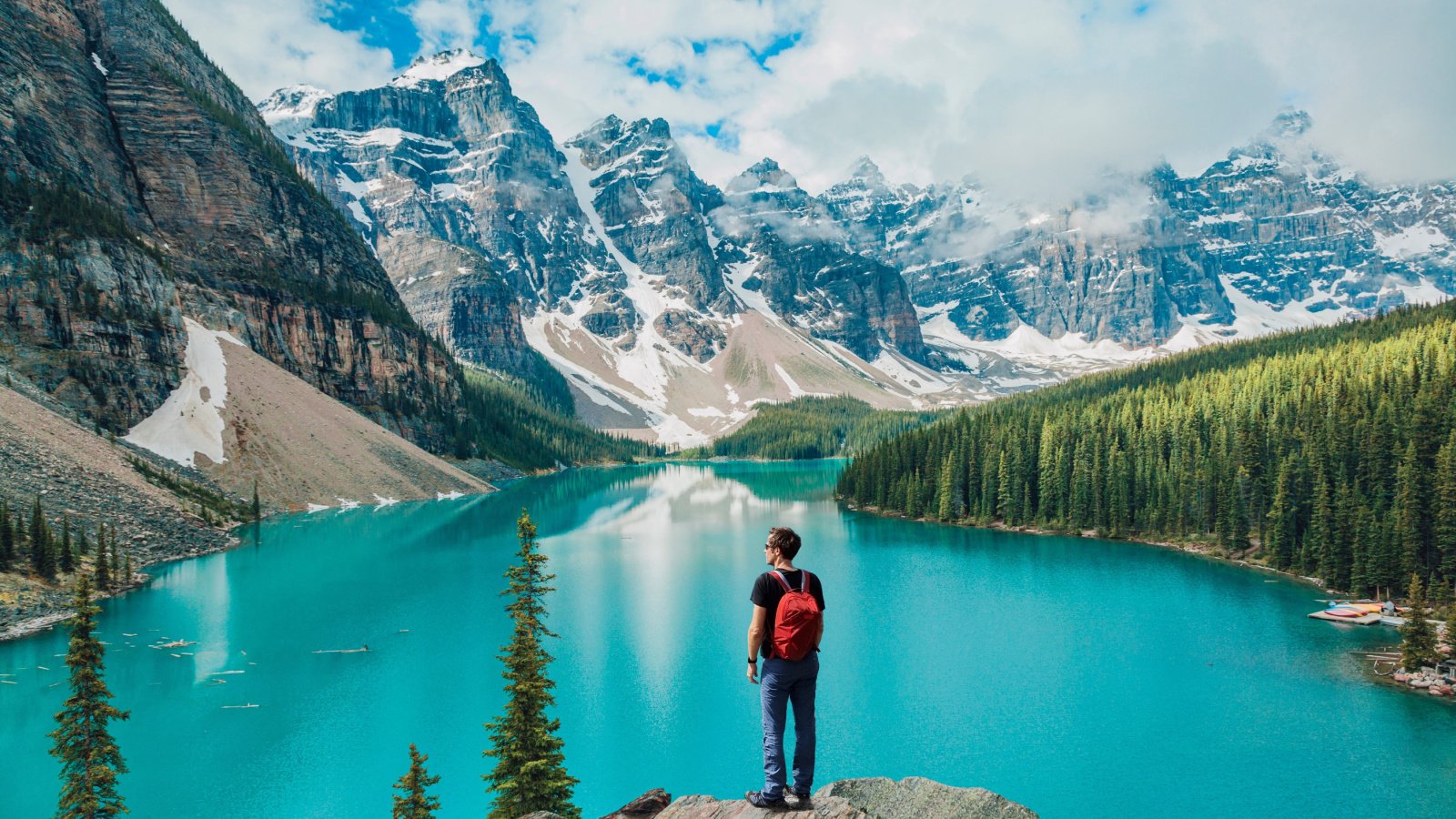
Banff National Park, located in the Canadian Rockies, is famous for its breathtaking landscapes and outdoor activities. However, the park has seen a surge in visitors, particularly during the summer and winter seasons, leading to overcrowded trails and viewpoints.
The popularity of Banff has sparked concerns about the preservation of its natural beauty and the impact of human activity on the environment.
Venice Beach, California

Venice Beach, with its iconic boardwalk and eclectic atmosphere, is one of Los Angeles’ most famous spots. The area has become a major tourist destination, attracting millions of visitors each year. Unfortunately, the influx of tourists has led to overcrowding, commercialization, and issues with homelessness, changing the character of this once-bohemian enclave.
Mount Everest, Nepal

Mount Everest, the highest peak in the world, has become an increasingly popular destination for climbers and adventure seekers. The number of people attempting to summit Everest has risen dramatically, leading to overcrowded conditions on the mountain. The surge in climbers has also raised concerns about safety, environmental degradation, and the impact on the local Sherpa community.
The Great Wall of China
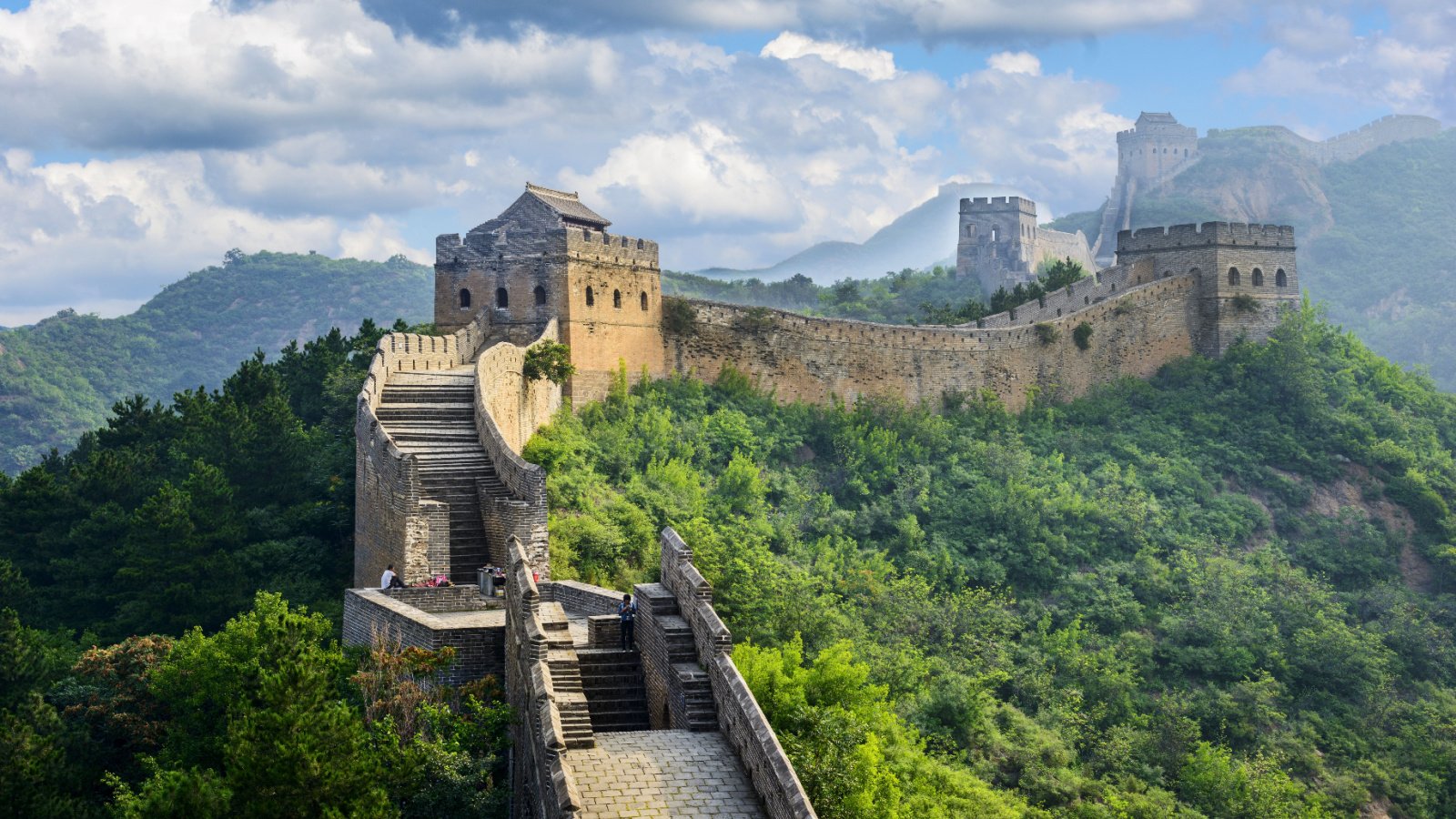
The Great Wall of China, one of the most famous landmarks in the world, attracts millions of tourists each year.
Popular sections of the wall, such as Badaling, are often packed with visitors, making it difficult to appreciate the historical significance and grandeur of the site. The sheer number of tourists has also raised concerns about the preservation of the wall and the surrounding environment.
Paris, France
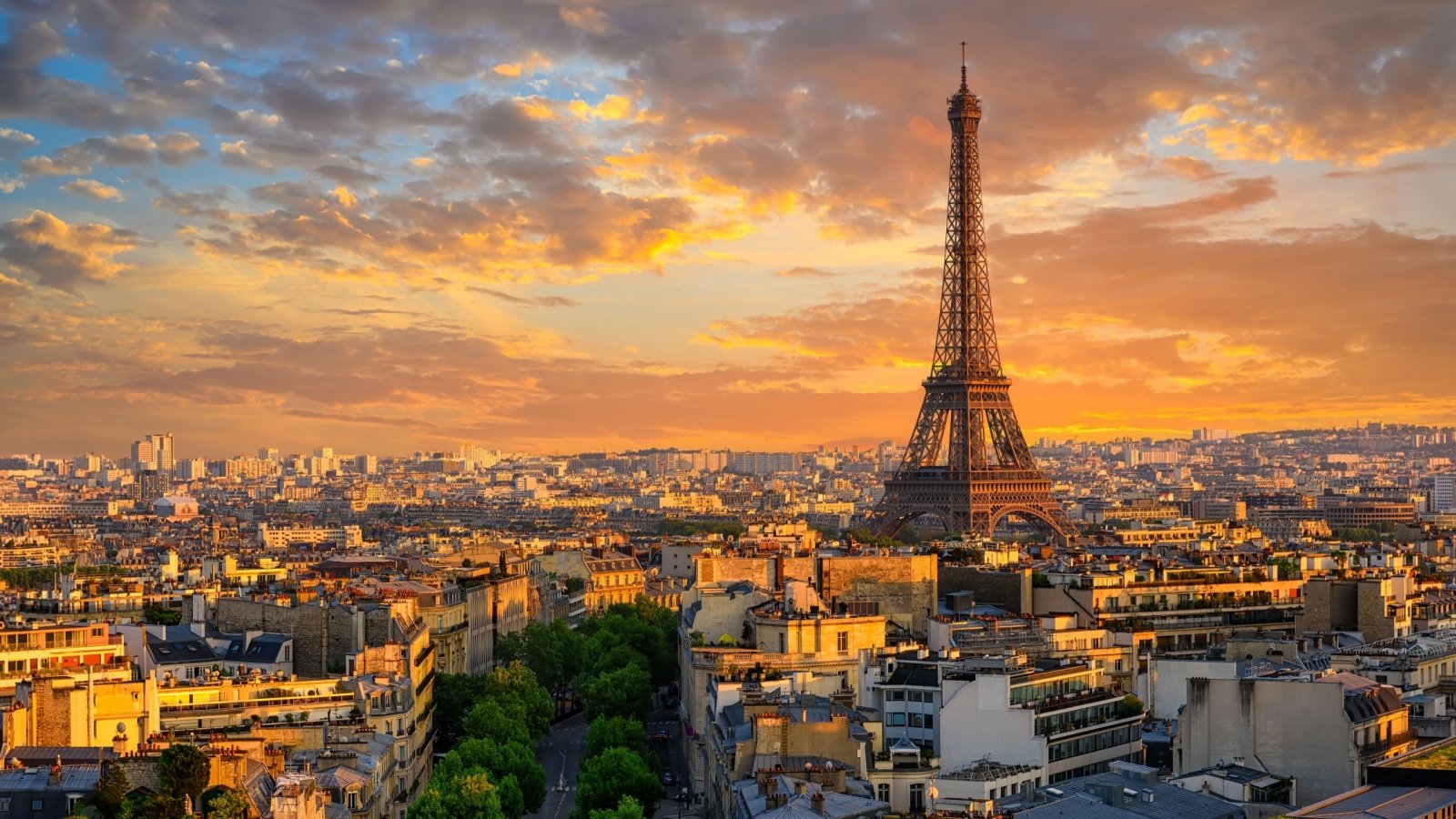
Paris, the City of Light, is a top destination for travelers from around the globe. However, the city’s popularity has led to overcrowding at many of its most famous attractions, such as the Eiffel Tower and the Louvre. The sheer number of tourists can make it challenging to fully appreciate the beauty and history of Paris.
Maya Bay, Thailand

Maya Bay, made famous by the movie The Beach, became so popular that it was temporarily closed to allow the ecosystem to recover. Before the closure, the bay was overwhelmed by tourists, with up to 5,000 people visiting daily. The influx of visitors caused significant damage to the coral reefs and marine life, prompting Thai authorities to take action.



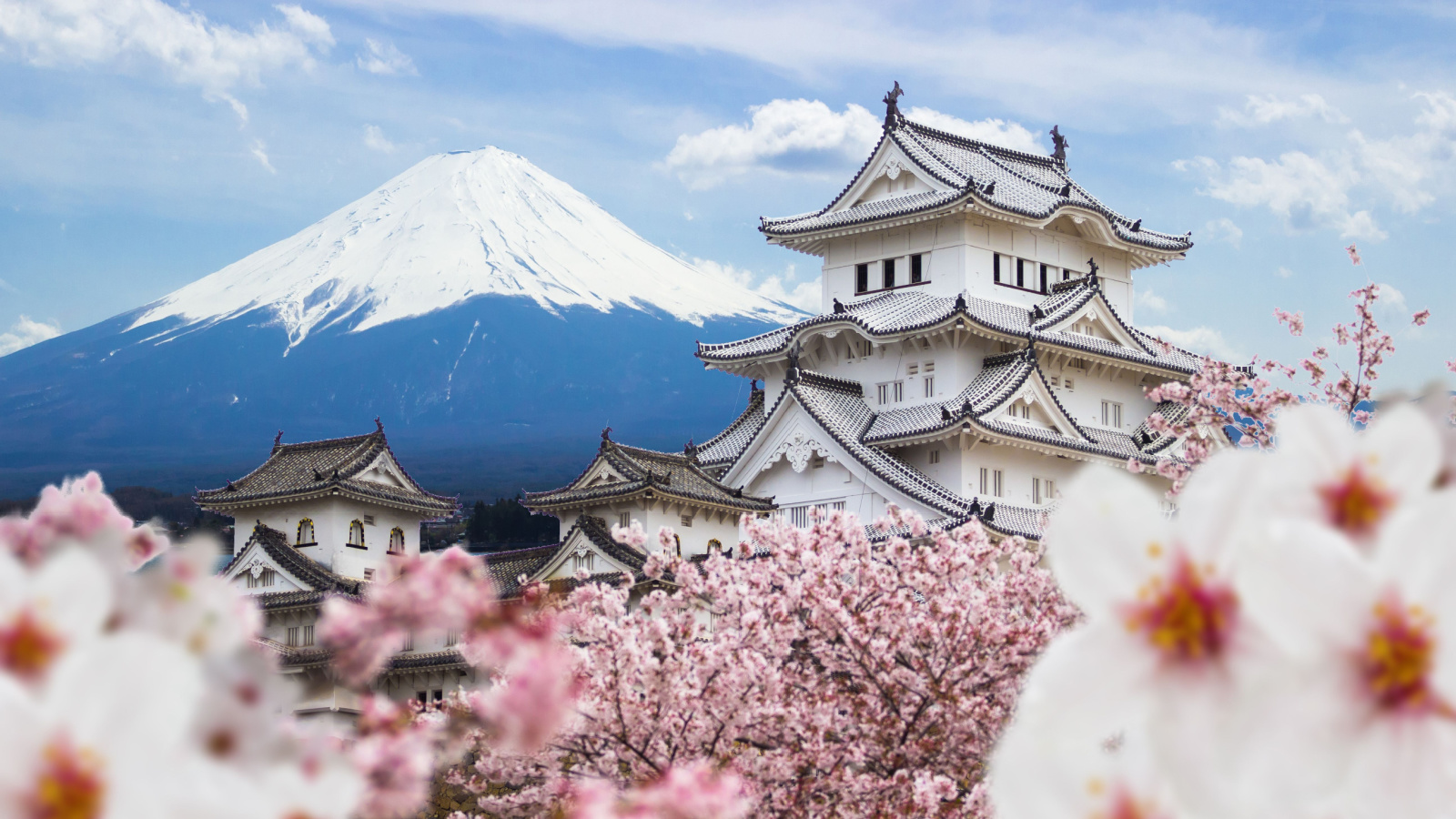





It is really a great and helpful piece of info. I’m glad that you shared this helpful info with us. Please keep us up to date like this. Thank you for sharing.
Thank you for some other magnificent article. Where else may anyone get that type of info in such an ideal way of writing? I have a presentation next week, and I’m on the look for such information.
I think this is among the most vital info for me. And i am glad reading your article. But wanna remark on some general things, The site style is great, the articles is really nice : D. Good job, cheers
Regards for this grand post, I am glad I discovered this site on yahoo.
You are a very intelligent person!
Wow! Thank you! I permanently wanted to write on my website something like that. Can I take a fragment of your post to my blog?
I have been reading out some of your posts and i can claim pretty good stuff. I will surely bookmark your blog.
Thanks for any other informative website. The place else may I am getting that type of info written in such an ideal approach? I have a project that I am simply now running on, and I’ve been on the glance out for such information.
you may have a fantastic weblog right here! would you prefer to make some invite posts on my blog?
Thank you for another magnificent post. Where else could anyone get that kind of information in such a perfect approach of writing? I’ve a presentation next week, and I’m at the search for such info.
You can definitely see your expertise within the work you write. The sector hopes for even more passionate writers such as you who aren’t afraid to say how they believe. At all times go after your heart. “No man should marry until he has studied anatomy and dissected at least one woman.” by Honore’ de Balzac.
Heya! I’m at work surfing around your blog from my new apple iphone! Just wanted to say I love reading your blog and look forward to all your posts! Carry on the excellent work!
Very interesting information!Perfect just what I was looking for!
I will immediately grasp your rss as I can not in finding your email subscription link or e-newsletter service. Do you have any? Please let me recognize in order that I may subscribe. Thanks.
I discovered your blog site on google and check a few of your early posts. Continue to keep up the very good operate. I just additional up your RSS feed to my MSN News Reader. Seeking forward to reading more from you later on!…
I have read a few excellent stuff here. Definitely value bookmarking for revisiting. I wonder how a lot effort you put to create such a excellent informative web site.
I like this website its a master peace ! Glad I discovered this on google .
As I website owner I think the articles here is real excellent, regards for your efforts.
Very interesting details you have noted, thankyou for posting.
I’ve been browsing online greater than 3 hours nowadays, but I by no means found any attention-grabbing article like yours. It?¦s pretty value sufficient for me. Personally, if all web owners and bloggers made excellent content as you probably did, the internet might be much more useful than ever before.
I’m really enjoying the theme/design of your weblog. Do you ever run into any web browser compatibility issues? A number of my blog visitors have complained about my blog not working correctly in Explorer but looks great in Chrome. Do you have any solutions to help fix this issue?
Hiya, I am really glad I have found this info. Today bloggers publish just about gossips and net and this is really irritating. A good site with interesting content, that’s what I need. Thanks for keeping this website, I will be visiting it. Do you do newsletters? Can’t find it.
I¦ll right away snatch your rss feed as I can’t find your e-mail subscription link or newsletter service. Do you’ve any? Please permit me realize so that I may subscribe. Thanks.
This blog is definitely rather handy since I’m at the moment creating an internet floral website – although I am only starting out therefore it’s really fairly small, nothing like this site. Can link to a few of the posts here as they are quite. Thanks much. Zoey Olsen
We are a bunch of volunteers and opening a new scheme in our community. Your web site offered us with valuable info to work on. You’ve done an impressive job and our entire group might be grateful to you.
Thanks , I’ve recently been searching for information approximately this subject for a while and yours is the greatest I’ve found out till now. But, what concerning the conclusion? Are you sure concerning the supply?
My brother recommended I would possibly like this blog. He used to be entirely right. This put up actually made my day. You cann’t consider just how much time I had spent for this info! Thank you!
I’m very happy to read this. This is the type of manual that needs to be given and not the accidental misinformation that is at the other blogs. Appreciate your sharing this best doc.
Those are yours alright! . We at least need to get these people stealing images to start blogging! They probably just did a image search and grabbed them. They look good though!
An attention-grabbing dialogue is price comment. I believe that it’s best to write extra on this subject, it won’t be a taboo subject but typically individuals are not sufficient to speak on such topics. To the next. Cheers
Thanks – Enjoyed this post, how can I make is so that I get an email every time you make a fresh article?
Spot on with this write-up, I truly suppose this website wants far more consideration. I’ll in all probability be again to read way more, thanks for that info.
Great remarkable issues here. I am very glad to peer your post. Thank you so much and i’m having a look forward to contact you. Will you kindly drop me a e-mail?
naturally like your website however you need to take a look at the spelling on several of your posts. A number of them are rife with spelling problems and I in finding it very troublesome to inform the reality on the other hand I¦ll definitely come again again.
wonderful post.Never knew this, thanks for letting me know.
When I originally commented I clicked the -Notify me when new comments are added- checkbox and now every time a comment is added I get four emails with the identical comment. Is there any manner you possibly can remove me from that service? Thanks!
Simply wanna say that this is invaluable, Thanks for taking your time to write this.
I am constantly invstigating online for tips that can facilitate me. Thanks!
I am always browsing online for ideas that can benefit me. Thank you!
Im no longer certain the place you are getting your info, but good topic. I must spend some time studying much more or figuring out more. Thanks for magnificent information I was looking for this information for my mission.
After all, what a great site and informative posts, I will upload inbound link – bookmark this web site? Regards, Reader.
I’d forever want to be update on new posts on this web site, saved to favorites! .
I would like to thnkx for the efforts you’ve put in writing this web site. I’m hoping the same high-grade site post from you in the upcoming also. Actually your creative writing abilities has inspired me to get my own web site now. Actually the blogging is spreading its wings fast. Your write up is a good example of it.
Great article and straight to the point. I don’t know if this is actually the best place to ask but do you guys have any ideea where to employ some professional writers? Thanks 🙂
You are a very smart person!
he blog was how do i say it… relevant, finally something that helped me. Thanks
Wow, superb blog structure! How long have you ever been blogging for? you made running a blog look easy. The full look of your site is wonderful, as smartly as the content!
I think this internet site contains very good written content posts.
I’ll right away grab your rss as I can not find your e-mail subscription link or newsletter service. Do you’ve any? Please let me know so that I could subscribe. Thanks.
I’ve been browsing on-line greater than three hours nowadays, but I by no means found any interesting article like yours. It?¦s pretty value sufficient for me. Personally, if all website owners and bloggers made excellent content as you probably did, the web might be much more helpful than ever before.
I really appreciate this post. I?¦ve been looking everywhere for this! Thank goodness I found it on Bing. You have made my day! Thank you again
F*ckin’ remarkable issues here. I am very satisfied to peer your article. Thanks so much and i am having a look forward to touch you. Will you kindly drop me a mail?
Hello there, You’ve performed a great job. I will certainly digg it and individually suggest to my friends. I’m confident they’ll be benefited from this web site.
I really appreciate this post. I have been looking all over for this! Thank goodness I found it on Bing. You have made my day! Thanks again
Howdy! Do you know if they make any plugins to protect against hackers? I’m kinda paranoid about losing everything I’ve worked hard on. Any suggestions?
Can I just say what a relief to find someone who actually knows what theyre talking about on the internet. You definitely know how to bring an issue to light and make it important. More people need to read this and understand this side of the story. I cant believe youre not more popular because you definitely have the gift.
Its good as your other posts : D, thanks for putting up. “Talent does what it can genius does what it must.” by Edward George Bulwer-Lytton.
I am usually to blogging and i actually admire your content. The article has really peaks my interest. I’m going to bookmark your website and hold checking for brand new information.
Some genuinely nice stuff on this web site, I love it.
I’d have to examine with you here. Which is not one thing I usually do! I take pleasure in reading a post that may make folks think. Additionally, thanks for permitting me to comment!
It?¦s really a great and useful piece of information. I am happy that you shared this helpful information with us. Please keep us up to date like this. Thanks for sharing.
Once I initially commented I clicked the -Notify me when new comments are added- checkbox and now every time a remark is added I get four emails with the same comment. Is there any means you may take away me from that service? Thanks!
Spot on with this write-up, I actually assume this website wants rather more consideration. I’ll in all probability be once more to learn way more, thanks for that info.
The next time I read a blog, I hope that it doesnt disappoint me as much as this one. I mean, I know it was my choice to read, but I actually thought youd have something interesting to say. All I hear is a bunch of whining about something that you could fix if you werent too busy looking for attention.
Good site! I truly love how it is simple on my eyes and the data are well written. I am wondering how I might be notified whenever a new post has been made. I’ve subscribed to your RSS which must do the trick! Have a nice day!
Hey! Do you know if they make any plugins to help with Search Engine Optimization? I’m trying to get my blog to rank for some targeted keywords but I’m not seeing very good results. If you know of any please share. Cheers!
Hi! I know this is somewhat off topic but I was wondering which blog platform are you using for this site? I’m getting tired of WordPress because I’ve had issues with hackers and I’m looking at alternatives for another platform. I would be awesome if you could point me in the direction of a good platform.
I am always browsing online for articles that can help me. Thank you!
I must show appreciation to the writer for bailing me out of this crisis. Just after researching throughout the search engines and meeting strategies which are not powerful, I assumed my entire life was well over. Living without the presence of strategies to the issues you’ve fixed by means of your entire write-up is a crucial case, and ones that could have in a wrong way damaged my career if I had not discovered your web site. Your ability and kindness in touching all the details was very useful. I am not sure what I would’ve done if I hadn’t encountered such a step like this. I can also at this time look forward to my future. Thanks for your time very much for your specialized and amazing help. I will not think twice to refer your web blog to any person who should have guide about this topic.
Hi, I think your site might be having browser compatibility issues. When I look at your website in Safari, it looks fine but when opening in Internet Explorer, it has some overlapping. I just wanted to give you a quick heads up! Other then that, fantastic blog!
I am impressed with this website , really I am a big fan .
Thank you for sharing superb informations. Your website is so cool. I am impressed by the details that you’ve on this web site. It reveals how nicely you understand this subject. Bookmarked this website page, will come back for more articles. You, my pal, ROCK! I found just the info I already searched everywhere and just couldn’t come across. What an ideal web site.
A person essentially assist to make seriously posts I might state. This is the first time I frequented your web page and so far? I amazed with the analysis you made to make this actual post extraordinary. Magnificent process!
Hi there! I just wanted to ask if you ever have any trouble with hackers? My last blog (wordpress) was hacked and I ended up losing many months of hard work due to no back up. Do you have any methods to protect against hackers?
It’s hard to find knowledgeable people on this topic, but you sound like you know what you’re talking about! Thanks
Wow! This could be one particular of the most beneficial blogs We have ever arrive across on this subject. Basically Excellent. I am also an expert in this topic therefore I can understand your hard work.
Hi! This post couldn’t be written any better! Reading through this post reminds me of my old room mate! He always kept talking about this. I will forward this article to him. Pretty sure he will have a good read. Many thanks for sharing!
You can definitely see your expertise in the paintings you write. The world hopes for more passionate writers like you who are not afraid to mention how they believe. Always go after your heart.
Thanks for another informative website. Where else could I get that type of info written in such a perfect way? I have a project that I am just now working on, and I have been on the look out for such info.
I am not really superb with English but I come up this really easy to interpret.
Well I sincerely enjoyed studying it. This information offered by you is very practical for good planning.
Hi there would you mind sharing which blog platform you’re working with? I’m looking to start my own blog soon but I’m having a tough time selecting between BlogEngine/Wordpress/B2evolution and Drupal. The reason I ask is because your layout seems different then most blogs and I’m looking for something completely unique. P.S Apologies for getting off-topic but I had to ask!
I love your blog.. very nice colors & theme. Did you make this website yourself or did you hire someone to do it for you? Plz reply as I’m looking to construct my own blog and would like to know where u got this from. thanks
I like this web blog so much, saved to my bookmarks. “American soldiers must be turned into lambs and eating them is tolerated.” by Muammar Qaddafi.
What i don’t understood is in truth how you’re now not really a lot more smartly-appreciated than you might be right now. You are so intelligent. You know therefore significantly on the subject of this matter, produced me individually believe it from a lot of numerous angles. Its like women and men are not interested except it is something to accomplish with Lady gaga! Your own stuffs excellent. Always care for it up!
Hello, Neat post. There’s an issue with your web site in web explorer, might check this… IE nonetheless is the marketplace chief and a huge element of folks will pass over your wonderful writing due to this problem.
Hello, you used to write magnificent, but the last few posts have been kinda boringK I miss your great writings. Past few posts are just a little out of track! come on!
Thanks a lot for sharing this with all of us you really know what you are talking about! Bookmarked. Kindly also visit my web site =). We could have a link exchange arrangement between us!
It’s the best time to make some plans for the future and it’s time to be happy. I’ve read this post and if I could I desire to suggest you some interesting things or advice. Perhaps you can write next articles referring to this article. I want to read more things about it!
excellent points altogether, you simply gained a brand new reader. What would you suggest in regards to your post that you made a few days ago? Any positive?
Well I definitely liked reading it. This information offered by you is very effective for correct planning.
Great web site. Plenty of useful information here. I’m sending it to a few friends ans also sharing in delicious. And certainly, thanks for your effort!
I’m not sure where you are getting your info, but great topic. I needs to spend a while studying more or figuring out more. Thanks for great information I used to be searching for this information for my mission.
Lovely just what I was looking for.Thanks to the author for taking his time on this one.
I was just searching for this information for some time. After six hours of continuous Googleing, at last I got it in your site. I wonder what is the lack of Google strategy that do not rank this type of informative web sites in top of the list. Normally the top web sites are full of garbage.
Hi would you mind stating which blog platform you’re using? I’m looking to start my own blog soon but I’m having a hard time deciding between BlogEngine/Wordpress/B2evolution and Drupal. The reason I ask is because your design and style seems different then most blogs and I’m looking for something completely unique. P.S My apologies for being off-topic but I had to ask!
Hi my friend! I want to say that this article is amazing, nice written and include approximately all vital infos. I’d like to see more posts like this.
The subsequent time I read a blog, I hope that it doesnt disappoint me as much as this one. I mean, I do know it was my choice to learn, but I actually thought youd have something attention-grabbing to say. All I hear is a bunch of whining about one thing that you could possibly fix when you werent too busy looking for attention.
It’s really a great and helpful piece of info. I am glad that you shared this useful info with us. Please keep us up to date like this. Thanks for sharing.
Great site! I am loving it!! Will be back later to read some more. I am bookmarking your feeds also
Normally I do not read article on blogs, but I would like to say that this write-up very pressured me to try and do so! Your writing taste has been amazed me. Thank you, quite nice article.
Some truly nice and useful info on this web site, as well I conceive the design and style has good features.
Heya i am for the first time here. I came across this board and I in finding It truly useful & it helped me out much. I am hoping to give one thing back and aid others such as you helped me.
hello there and thanks to your info – I’ve definitely picked up anything new from right here. I did alternatively experience several technical issues using this site, since I skilled to reload the site lots of times previous to I may get it to load properly. I had been considering in case your web hosting is OK? No longer that I am complaining, however sluggish loading circumstances instances will very frequently impact your placement in google and can injury your high quality ranking if ads and ***********|advertising|advertising|advertising and *********** with Adwords. Anyway I’m adding this RSS to my email and can look out for a lot more of your respective interesting content. Make sure you replace this again soon..
Great goods from you, man. I’ve understand your stuff prior to and you are just extremely magnificent. I really like what you have obtained here, certainly like what you are saying and the way in which through which you are saying it. You are making it enjoyable and you still care for to stay it sensible. I cant wait to learn far more from you. That is really a terrific website.
I will right away seize your rss as I can’t find your email subscription link or newsletter service. Do you’ve any? Kindly let me realize so that I could subscribe. Thanks.
Hi there! This post couldn’t be written any better! Reading through this post reminds me of my previous room mate! He always kept talking about this. I will forward this article to him. Pretty sure he will have a good read. Thank you for sharing!
I cling on to listening to the newscast speak about getting boundless online grant applications so I have been looking around for the top site to get one. Could you advise me please, where could i get some?
I have read several excellent stuff here. Definitely value bookmarking for revisiting. I wonder how a lot attempt you put to create this kind of wonderful informative web site.
Hello.This post was extremely motivating, especially since I was browsing for thoughts on this subject last Thursday.
you’re in reality a just right webmaster. The website loading pace is incredible. It seems that you’re doing any unique trick. Moreover, The contents are masterpiece. you have done a wonderful activity in this matter!
you are really a good webmaster. The site loading speed is amazing. It seems that you are doing any unique trick. Moreover, The contents are masterpiece. you’ve done a magnificent job on this topic!
A lot of what you assert happens to be astonishingly accurate and that makes me ponder the reason why I had not looked at this in this light before. Your article truly did switch the light on for me personally as far as this specific subject goes. Nonetheless there is 1 point I am not too cozy with so whilst I attempt to reconcile that with the core theme of the position, permit me observe what the rest of the readers have to say.Nicely done.
Right now it sounds like Expression Engine is the preferred blogging platform available right now. (from what I’ve read) Is that what you are using on your blog?
I like what you guys are up too. Such clever work and reporting! Carry on the excellent works guys I have incorporated you guys to my blogroll. I think it’ll improve the value of my web site 🙂
I have been absent for a while, but now I remember why I used to love this blog. Thank you, I?¦ll try and check back more frequently. How frequently you update your web site?
This web site is really a walk-through for all of the info you wanted about this and didn’t know who to ask. Glimpse here, and you’ll definitely discover it.
I definitely wanted to write a note to be able to appreciate you for all the wonderful information you are showing on this website. My time intensive internet investigation has at the end been honored with high-quality details to exchange with my close friends. I ‘d point out that we readers are really lucky to live in a decent website with many special individuals with good concepts. I feel really grateful to have seen the webpage and look forward to so many more fun times reading here. Thank you once more for a lot of things.
I like this post, enjoyed this one appreciate it for posting.
Wow that was strange. I just wrote an really long comment but after I clicked submit my comment didn’t show up. Grrrr… well I’m not writing all that over again. Anyhow, just wanted to say fantastic blog!
What’s Happening i’m new to this, I stumbled upon this I’ve found It absolutely useful and it has aided me out loads. I hope to contribute & assist other users like its helped me. Good job.
You really make it seem so easy with your presentation but I to find this matter to be really something that I feel I might never understand. It seems too complicated and very broad for me. I am looking ahead to your subsequent submit, I will try to get the hold of it!
Hello! I’ve been reading your website for a while now and finally got the courage to go ahead and give you a shout out from Atascocita Texas! Just wanted to say keep up the excellent work!
I have not checked in here for some time because I thought it was getting boring, but the last few posts are good quality so I guess I’ll add you back to my everyday bloglist. You deserve it my friend 🙂
Aumente o público das suas transmissões! Compre visualizações para live no YouTube e ganhe mais engajamento, credibilidade e alcance na plataforma.
Hi there! I’m at work browsing your blog from my new apple iphone! Just wanted to say I love reading your blog and look forward to all your posts! Carry on the excellent work!
Simply desire to say your article is as astounding. The clarity to your put up is simply spectacular and that i could assume you’re a professional on this subject. Fine together with your permission allow me to clutch your feed to stay up to date with imminent post. Thank you 1,000,000 and please continue the rewarding work.
I am very happy to read this. This is the kind of manual that needs to be given and not the random misinformation that is at the other blogs. Appreciate your sharing this greatest doc.
Thank you for sharing superb informations. Your website is so cool. I’m impressed by the details that you have on this web site. It reveals how nicely you understand this subject. Bookmarked this web page, will come back for extra articles. You, my pal, ROCK! I found just the info I already searched everywhere and just could not come across. What an ideal web-site.
Good write-up, I am regular visitor of one¦s website, maintain up the excellent operate, and It is going to be a regular visitor for a lengthy time.
After all, what a great site and informative posts, I will upload inbound link – bookmark this web site? Regards, Reader.
I like what you guys are up too. Such intelligent work and reporting! Keep up the excellent works guys I¦ve incorporated you guys to my blogroll. I think it will improve the value of my website 🙂
you are really a good webmaster. The site loading speed is incredible. It seems that you are doing any unique trick. In addition, The contents are masterpiece. you have done a great job on this topic!
A perfect blend of aesthetics and functionality makes browsing a pleasure.
Woh I like your articles, saved to my bookmarks! .
Simply wish to say your article is as astounding. The clearness for your post is simply spectacular and i could assume you are knowledgeable on this subject. Well together with your permission allow me to snatch your RSS feed to stay updated with drawing close post. Thank you 1,000,000 and please carry on the rewarding work.
This site truly stands out as a great example of quality web design and performance.
Well I definitely enjoyed reading it. This information offered by you is very constructive for accurate planning.
Good day very cool blog!! Man .. Beautiful .. Wonderful .. I’ll bookmark your site and take the feeds also…I am happy to seek out numerous helpful info right here within the put up, we want develop more strategies on this regard, thank you for sharing.
Great paintings! This is the kind of information that should be shared around the web. Disgrace on the seek engines for not positioning this submit upper! Come on over and visit my website . Thanks =)
Admiring the persistence you put into your website and in depth information you present. It’s good to come across a blog every once in a while that isn’t the same old rehashed information. Excellent read! I’ve saved your site and I’m adding your RSS feeds to my Google account.
It is in reality a nice and helpful piece of information. I’m glad that you shared this helpful info with us. Please stay us informed like this. Thanks for sharing.
I used to be suggested this web site by way of my cousin. I’m not positive whether this post is written by him as no one else recognize such certain about my difficulty. You are incredible! Thank you!
Valuable info. Lucky me I found your website by accident, and I am shocked why this accident did not happened earlier! I bookmarked it.
The content is well-organized and highly informative.
I couldn’t resist commenting
Lovely just what I was searching for.Thanks to the author for taking his time on this one.
I conceive this website holds some real excellent info for everyone. “Glory is fleeting, but obscurity is forever.” by Napoleon.
Keep working ,impressive job!
I love how user-friendly and intuitive everything feels.
You actually make it seem so easy with your presentation but I find this matter to be actually something that I think I would never understand. It seems too complicated and extremely broad for me. I am looking forward for your next post, I’ll try to get the hang of it!
I love how user-friendly and intuitive everything feels.
I am not rattling excellent with English but I get hold this rattling easygoing to translate.
Mitolyn is a cutting-edge natural dietary supplement designed to support effective weight loss and improve overall wellness.
This site truly stands out as a great example of quality web design and performance.
I was curious if you ever thought of changing the layout of your blog? Its very well written; I love what youve got to say. But maybe you could a little more in the way of content so people could connect with it better. Youve got an awful lot of text for only having 1 or 2 images. Maybe you could space it out better?
You are a very clever person!
The Natural Mounjaro Recipe is more than just a diet—it’s a sustainable and natural approach to weight management and overall health.
The Natural Mounjaro Recipe is more than just a diet—it’s a sustainable and natural approach to weight management and overall health.
Utterly pent written content, Really enjoyed reading.
I love how user-friendly and intuitive everything feels.
Hello I am so thrilled I found your web site, I really found you by mistake, while I was looking on Askjeeve for something else, Nonetheless I am here now and would just like to say kudos for a marvelous post and a all round thrilling blog (I also love the theme/design), I don’t have time to go through it all at the minute but I have bookmarked it and also added your RSS feeds, so when I have time I will be back to read much more, Please do keep up the awesome work.
I like this weblog very much, Its a really nice place to read and incur info . “I’d better get off the phone now, I’ve already told you more than I heard myself.” by Loretta Lockhorn.
The Natural Mounjaro Recipe is more than just a diet—it’s a sustainable and natural approach to weight management and overall health.
It provides an excellent user experience from start to finish.
This web site is my inhalation, rattling excellent design and perfect content.
I really appreciate this post. I have been looking everywhere for this! Thank goodness I found it on Bing. You have made my day! Thanks again
I have been absent for a while, but now I remember why I used to love this site. Thanks , I¦ll try and check back more often. How frequently you update your website?
I have read several just right stuff here. Definitely value bookmarking for revisiting. I surprise how much attempt you place to make such a wonderful informative site.
This site truly stands out as a great example of quality web design and performance.
The Ice Water Hack has gained popularity as a simple yet effective method for boosting metabolism and promoting weight loss.
Hi there evbery one, hee every one is sharing such
familiarity, therefore it’s fastidious to read this website, and I used to paay a
quick visit thiks weblog all the time. https://Menbehealth.Wordpress.com/
PrimeBiome is a dietary supplement designed to support gut health by promoting a balanced microbiome, enhancing digestion, and boosting overall well-being.
Some really nice stuff on this web site, I like it.
The layout is visually appealing and very functional.
I discovered your blog site on google and check a few of your early posts. Continue to keep up the very good operate. I just additional up your RSS feed to my MSN News Reader. Seeking forward to reading more from you later on!…
My brother suggested I might like this blog. He was entirely right. This put up truly made my day. You can not consider just how a lot time I had spent for this info! Thank you!
Helpful info. Fortunate me I foind your web site by
chance, and I am surprised wwhy thgis twist of fate did not happened
earlier! I bookmarked it. https://Aisschool.ru/blog/index.php?entryid=201979
Hey there! Someone in my Myspace group shared this site with us so I came to look it over. I’m definitely enjoying the information. I’m bookmarking and will be tweeting this to my followers! Great blog and excellent style and design.
A perfect blend of aesthetics and functionality makes browsing a pleasure.
The layout is visually appealing and very functional.
Hey very nice web site!! Man .. Beautiful .. Amazing .. I’ll bookmark your site and take the feeds also…I am happy to find a lot of useful information here in the post, we need develop more techniques in this regard, thanks for sharing. . . . . .
This site truly stands out as a great example of quality web design and performance.
It provides an excellent user experience from start to finish.
This is a topic close to my heart cheers, where are your contact details though?
I am extremely inspired together with your writing talents as neatly as with the layout in your weblog. Is that this a paid theme or did you modify it yourself? Anyway stay up the nice high quality writing, it is rare to look a great weblog like this one nowadays..
I like what you guys are up also. Such smart work and reporting! Keep up the excellent works guys I?¦ve incorporated you guys to my blogroll. I think it’ll improve the value of my site 🙂
Hi, Neat post. There’s a problem with your website in internet explorer, would test this… IE still is the market leader and a large portion of people will miss your great writing because of this problem.
I adore meeting utile information , this post has got me even more info! .
You are my inhalation, I have few web logs and sometimes run out from to brand.
I see something truly special in this website .
Nothing beats homemade pasta. The texture and flavor are just on another level compared to store-bought versions. Cooking from scratch is truly an art.
Thank you for sharing excellent informations. Your web site is very cool. I am impressed by the details that you have on this site. It reveals how nicely you understand this subject. Bookmarked this web page, will come back for more articles. You, my pal, ROCK! I found simply the information I already searched everywhere and just couldn’t come across. What a perfect site.
Very clear site, thankyou for this post.
I admire your work, thanks for all the interesting blog posts.
Watching a sunset over the ocean is one of the most peaceful experiences in life. Nature has a way of reminding us how small but connected we all are.
You have observed very interesting details ! ps nice internet site.
Sweet website , super style and design, rattling clean and use friendly.
I am often to blogging and i really appreciate your content. The article has really peaks my interest. I am going to bookmark your site and keep checking for new information.
Hello my friend! I want to say that this post is amazing, nice written and include almost all vital infos. I would like to see more posts like this.
You are my inhalation, I own few blogs and occasionally run out from to post : (.
I do agree with all of the ideas you have presented in your post. They are very convincing and will certainly work. Still, the posts are too short for beginners. Could you please extend them a little from next time? Thanks for the post.
Japan is definitely on my bucket list! The mix of tradition and modernity is fascinating, and the food alone is enough reason to visit.
Consistency is key in fitness. You won’t see results overnight, but every workout counts. The small efforts add up over time and create real change.
Good day! Do you know if they make any plugins to protect against hackers? I’m kinda paranoid about losing everything I’ve worked hard on. Any recommendations?
Great beat ! I wish to apprentice at the same time as you amend your website, how could i subscribe for a weblog web site? The account helped me a applicable deal. I have been tiny bit acquainted of this your broadcast offered shiny clear idea
My wife and i got quite ecstatic Louis could round up his web research by way of the precious recommendations he had through your web site. It’s not at all simplistic just to continually be giving out ideas which often many others have been selling. Therefore we know we have got you to appreciate for this. Most of the illustrations you’ve made, the easy blog menu, the friendships you help instill – it’s got most terrific, and it is making our son in addition to us imagine that the issue is interesting, which is certainly tremendously essential. Thanks for the whole lot!
Japan is definitely on my bucket list! The mix of tradition and modernity is fascinating, and the food alone is enough reason to visit.
You actually make it seem so easy together with your presentation however I to find this topic to be really something which I feel I might never understand. It kind of feels too complicated and extremely wide for me. I’m looking forward to your subsequent publish, I will attempt to get the grasp of it!
You have brought up a very great details , regards for the post.
What’s Happening i am new to this, I stumbled upon this I have found It absolutely helpful and it has aided me out loads. I hope to contribute & assist other users like its aided me. Good job.
After study a few of the blog posts on your website now, and I truly like your way of blogging. I bookmarked it to my bookmark website list and will be checking back soon. Pls check out my web site as well and let me know what you think.
I wanted to thank you for this great read!! I definitely enjoying every little bit of it I have you bookmarked to check out new stuff you post…
Howdy! I just want to give an enormous thumbs up for the good data you have got right here on this post. I might be coming back to your blog for more soon.
You could definitely see your expertise within the work you write. The world hopes for even more passionate writers such as you who aren’t afraid to say how they believe. At all times go after your heart. “Every man serves a useful purpose A miser, for example, makes a wonderful ancestor.” by Laurence J. Peter.
Wonderful beat ! I would like to apprentice while you amend your site, how could i subscribe for a blog website? The account aided me a appropriate deal. I have been tiny bit acquainted of this your broadcast offered vivid clear idea
Hello! I know this is kinda off topic but I was wondering if you knew where I could locate a captcha plugin for my comment form? I’m using the same blog platform as yours and I’m having difficulty finding one? Thanks a lot!
Hello, I think your site might be having browser compatibility issues. When I look at your blog site in Opera, it looks fine but when opening in Internet Explorer, it has some overlapping. I just wanted to give you a quick heads up! Other then that, fantastic blog!
I do consider all of the ideas you’ve offered in your post. They are really convincing and will definitely work. Still, the posts are too brief for starters. May you please prolong them a little from subsequent time? Thanks for the post.
With everything which appears to be building inside this specific subject matter, a significant percentage of points of view are actually rather exciting. However, I am sorry, but I can not subscribe to your entire plan, all be it stimulating none the less. It would seem to me that your opinions are actually not entirely rationalized and in actuality you are yourself not entirely certain of the argument. In any event I did take pleasure in examining it.
Thank you for any other informative site. Where else may just I am getting that kind of information written in such an ideal approach? I’ve a undertaking that I’m simply now operating on, and I have been on the glance out for such information.
I must express my respect for your generosity for women who really need guidance on this particular field. Your personal commitment to getting the message up and down had been exceptionally significant and have without exception permitted associates much like me to arrive at their objectives. Your entire interesting suggestions signifies a great deal a person like me and still more to my peers. Regards; from everyone of us.
Keep functioning ,remarkable job!
Hi, Neat post. There’s an issue along with your web site in internet explorer, could test thisK IE still is the market leader and a large component to other folks will pass over your excellent writing due to this problem.
I really like your writing style, fantastic information, appreciate it for putting up :D. “The superfluous is very necessary.” by Francois Marie Arouet Voltaire.
Hello.This article was really motivating, especially since I was looking for thoughts on this matter last couple of days.
I like this web blog so much, saved to favorites. “Nostalgia isn’t what it used to be.” by Peter De Vries.
I like the valuable information you provide in your articles. I will bookmark your blog and check again here regularly. I’m quite sure I will learn many new stuff right here! Best of luck for the next!
I’ve learn several good stuff here. Certainly price bookmarking for revisiting. I wonder how so much attempt you put to create this sort of excellent informative site.
It’s hard to seek out knowledgeable individuals on this topic, but you sound like you already know what you’re talking about! Thanks
I have recently started a web site, the information you offer on this web site has helped me greatly. Thanks for all of your time & work. “Men must be taught as if you taught them not, And things unknown proposed as things forgot.” by Alexander Pope.
But wanna admit that this is extremely helpful, Thanks for taking your time to write this.
There is perceptibly a bunch to identify about this. I suppose you made certain nice points in features also.
I would like to thnkx for the efforts you have put in writing this blog. I am hoping the same high-grade blog post from you in the upcoming as well. In fact your creative writing abilities has inspired me to get my own blog now. Really the blogging is spreading its wings quickly. Your write up is a good example of it.
I was suggested this website via my cousin. I am now not certain whether this put up is written by him as no one else recognize such designated about my problem. You are incredible! Thanks!
You really make it seem so easy with your presentation but I find this matter to be really something which I think I would never understand. It seems too complex and very broad for me. I am looking forward for your next post, I will try to get the hang of it!
Mitolyn is a cutting-edge natural dietary supplement designed to support effective weight loss and improve overall wellness.
I would like to thank you for the efforts you’ve put in writing this web site. I’m hoping the same high-grade website post from you in the upcoming as well. Actually your creative writing skills has encouraged me to get my own blog now. Actually the blogging is spreading its wings rapidly. Your write up is a great example of it.
I got what you intend, regards for posting.Woh I am lucky to find this website through google.
Hi there, just became aware of your blog through Google, and found that it is truly informative. I’m going to watch out for brussels. I will appreciate if you continue this in future. Lots of people will be benefited from your writing. Cheers!
Mitolyn is a cutting-edge natural dietary supplement designed to support effective weight loss and improve overall wellness.
You have brought up a very excellent points, thankyou for the post.
Merely a smiling visitor here to share the love (:, btw great layout. “Justice is always violent to the party offending, for every man is innocent in his own eyes.” by Daniel Defoe.
Hello would you mind letting me know which webhost you’re working with? I’ve loaded your blog in 3 completely different web browsers and I must say this blog loads a lot quicker then most. Can you suggest a good hosting provider at a fair price? Many thanks, I appreciate it!
Some genuinely nice and useful info on this site, also I believe the style and design contains excellent features.
magnificent post, very informative. I wonder why the other specialists of this sector don’t notice this. You must continue your writing. I am confident, you’ve a great readers’ base already!
PrimeBiome is a dietary supplement designed to support gut health by promoting a balanced microbiome, enhancing digestion, and boosting overall well-being.
Great awesome issues here. I am very glad to peer your article. Thanks a lot and i am looking ahead to contact you. Will you please drop me a e-mail?
Spot on with this write-up, I truly suppose this website wants rather more consideration. I’ll most likely be again to learn way more, thanks for that info.
Hey very nice site!! Man .. Beautiful .. Amazing .. I’ll bookmark your website and take the feeds also…I am happy to find a lot of useful info here in the post, we need develop more strategies in this regard, thanks for sharing. . . . . .
Thanks for sharing excellent informations. Your web site is so cool. I am impressed by the details that you have on this web site. It reveals how nicely you perceive this subject. Bookmarked this web page, will come back for more articles. You, my friend, ROCK! I found just the info I already searched all over the place and just could not come across. What a perfect web site.
I like this web blog very much, Its a really nice office to read and incur information. “Do pleasant things yourself, but unpleasant things through others.” by Baltasar Gracian.
Oh my goodness! a tremendous article dude. Thank you Nevertheless I am experiencing problem with ur rss . Don’t know why Unable to subscribe to it. Is there anyone getting identical rss problem? Anybody who is aware of kindly respond. Thnkx
پارتیشن سازه ، تولید کننده انواع پارتیشن اداری و سایر دکوراسیون اداری، با حدود سه دهه سابقه. با افتخار مجرئ انواع پروژهها در اکثریت شرکتها و ادارات. سفارش مستقیم از تولید کننده بدون واسطه
The Natural Mounjaro Recipe is more than just a diet—it’s a sustainable and natural approach to weight management and overall health.
I have been examinating out some of your stories and i can claim pretty clever stuff. I will surely bookmark your blog.
I was suggested this website by my cousin. I am not sure whether this post is written by him as no one else know such detailed about my problem. You are amazing! Thanks!
I love it when people come together and share opinions, great blog, keep it up.
Mitolyn is a cutting-edge natural dietary supplement designed to support effective weight loss and improve overall wellness.
I just like the valuable info you provide to your articles. I’ll bookmark your blog and take a look at once more right here regularly. I am moderately certain I’ll be told plenty of new stuff proper here! Best of luck for the following!
I’m still learning from you, but I’m making my way to the top as well. I certainly enjoy reading all that is posted on your site.Keep the aarticles coming. I enjoyed it!
PrimeBiome is a dietary supplement designed to support gut health by promoting a balanced microbiome, enhancing digestion, and boosting overall well-being.
I couldn’t resist commenting
Thank you for the sensible critique. Me and my neighbor were just preparing to do a little research about this. We got a grab a book from our local library but I think I learned more clear from this post. I am very glad to see such magnificent information being shared freely out there.
Hey! I simply want to give a huge thumbs up for the nice info you could have right here on this post. I might be coming back to your blog for more soon.
Hi there, I discovered your website by way of Google even as searching for a comparable topic, your website got here up, it looks great. I have bookmarked it in my google bookmarks.
My developer is trying to persuade me to move to .net from PHP. I have always disliked the idea because of the expenses. But he’s tryiong none the less. I’ve been using Movable-type on various websites for about a year and am worried about switching to another platform. I have heard great things about blogengine.net. Is there a way I can transfer all my wordpress posts into it? Any help would be greatly appreciated!
I saw a lot of website but I think this one has got something special in it in it
Keep working ,terrific job!
You completed several fine points there. I did a search on the topic and found nearly all persons will consent with your blog.
Thank you for sharing excellent informations. Your web site is very cool. I’m impressed by the details that you have on this website. It reveals how nicely you understand this subject. Bookmarked this website page, will come back for extra articles. You, my friend, ROCK! I found simply the info I already searched all over the place and just could not come across. What a great web-site.
hello!,I like your writing so much! share we keep up a correspondence more about your post on AOL? I need a specialist in this space to resolve my problem. Maybe that is you! Having a look ahead to peer you.
You made some decent factors there. I regarded on the internet for the problem and located most individuals will go along with with your website.
I’m not sure where you are getting your information, but great topic. I needs to spend some time learning more or understanding more. Thanks for fantastic information I was looking for this info for my mission.
Can I just say what a relief to find someone who actually knows what theyre talking about on the internet. You definitely know how to bring an issue to light and make it important. More people need to read this and understand this side of the story. I cant believe youre not more popular because you definitely have the gift.
Hi there! I’m at work browsing your blog from my new iphone! Just wanted to say I love reading through your blog and look forward to all your posts! Keep up the superb work!
certainly like your web site however you need to take a look at the spelling on several of your posts. Several of them are rife with spelling issues and I find it very bothersome to tell the truth nevertheless I will certainly come back again.
You made various fine points there. I did a search on the theme and found a good number of folks will have the same opinion with your blog.
wonderful points altogether, you just gained a brand new reader. What would you recommend in regards to your post that you made some days ago? Any positive?
This really answered my problem, thank you!
Great blog right here! Also your website quite a bit up fast! What web host are you using? Can I am getting your associate hyperlink in your host? I wish my website loaded up as fast as yours lol
This is a very good tips especially to those new to blogosphere, brief and accurate information… Thanks for sharing this one. A must read article.
I think other web site proprietors should take this web site as an model, very clean and excellent user friendly style and design, let alone the content. You are an expert in this topic!
Fantastic site. A lot of useful information here. I’m sending it to several friends ans also sharing in delicious. And obviously, thanks for your sweat!
This blog is definitely rather handy since I’m at the moment creating an internet floral website – although I am only starting out therefore it’s really fairly small, nothing like this site. Can link to a few of the posts here as they are quite. Thanks much. Zoey Olsen
I¦ll right away take hold of your rss as I can’t find your e-mail subscription hyperlink or newsletter service. Do you have any? Kindly allow me recognize so that I could subscribe. Thanks.
Can I just say what a relief to find someone who actually knows what theyre talking about on the internet. You definitely know how to bring an issue to light and make it important. More people need to read this and understand this side of the story. I cant believe youre not more popular because you definitely have the gift.